How to Cook Meat to Your Preferred Doneness, Plus Some Tricks to Make It Tasty
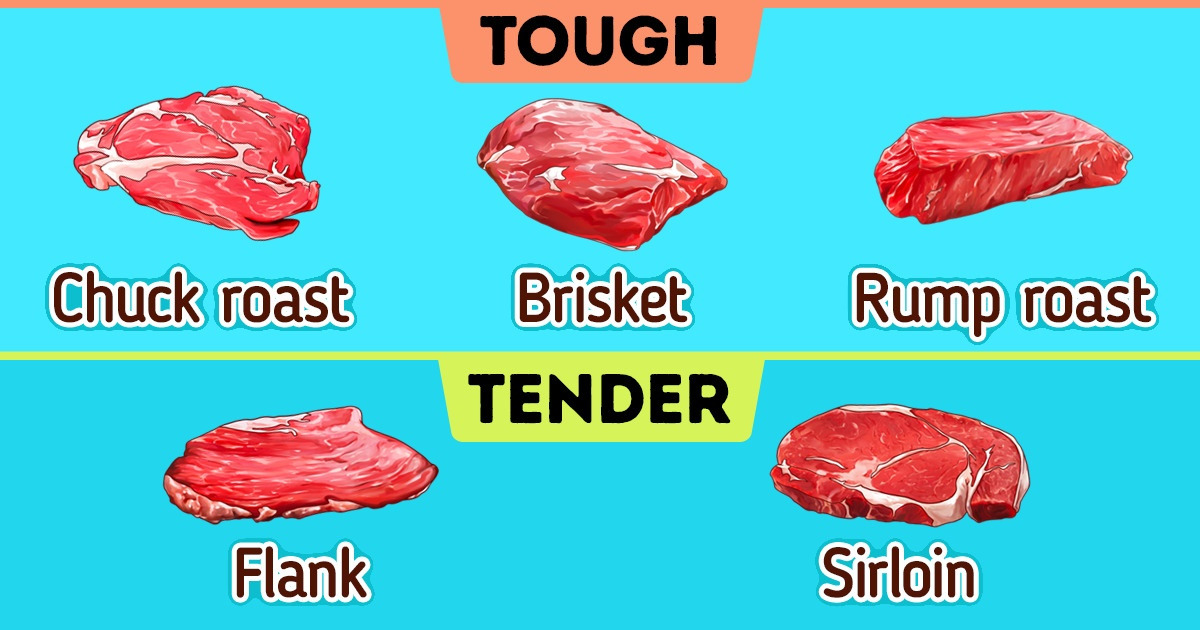
Oven-roasted or grilled meat is a dish that is prepared very often. After all, it’s tasty, nutritious, and filling. However, although it may seem easy to make, in practice, it doesn’t always turn out as expected. In 5-Minute Crafts, we’ll show you, step by step, how to prepare this dish so that it turns out tasty with the desired doneness.
Grilled meat
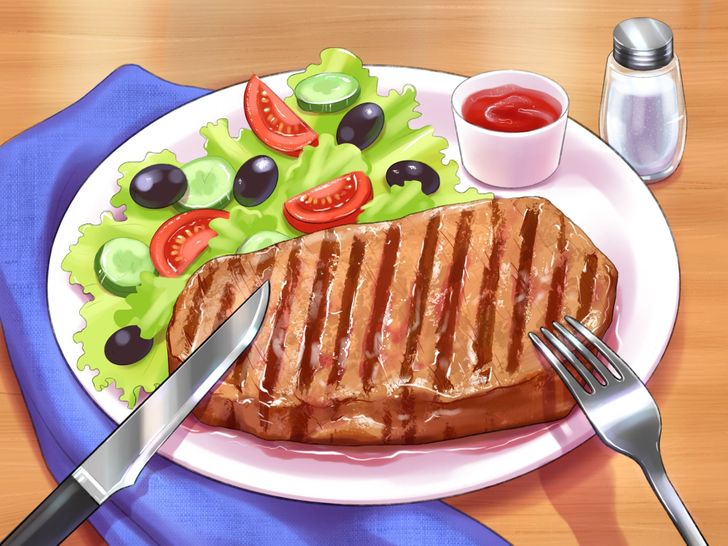
Grilled meat with mashed potatoes, baked potatoes, or salad is the meal of choice when we want to cook something easy but that’s also delicious, nutritious, and lean. But knowing the right technique to prepare it is important, as it can help you cook it quite quickly.
These are the most common and ideal cuts of meat to grill:
- Filet mignon
- Tenderloin
- Paleta (typical Brazilian meat cut of chuck and brisket)
- Bife de chorizo (typical Argentinian meat cut similar to strip steak — called NY strip in the US)
- T-bone or porterhouse steaks
- Ribeye steak
Cooking method
Step 1: Sear the meat on one side, then put it at maximum heat on the other.
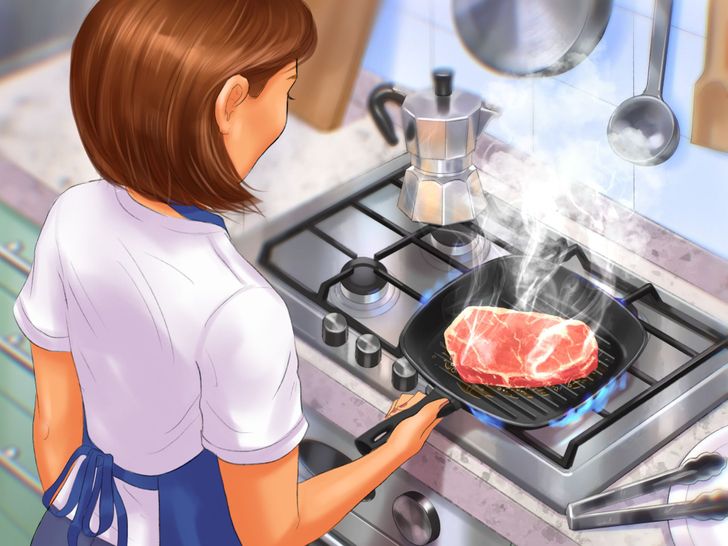
-
This will prevent it from losing its juices and becoming dry. After this time, lower the heat.
Step 2: Pick it up and place it on the same side but in the other direction.
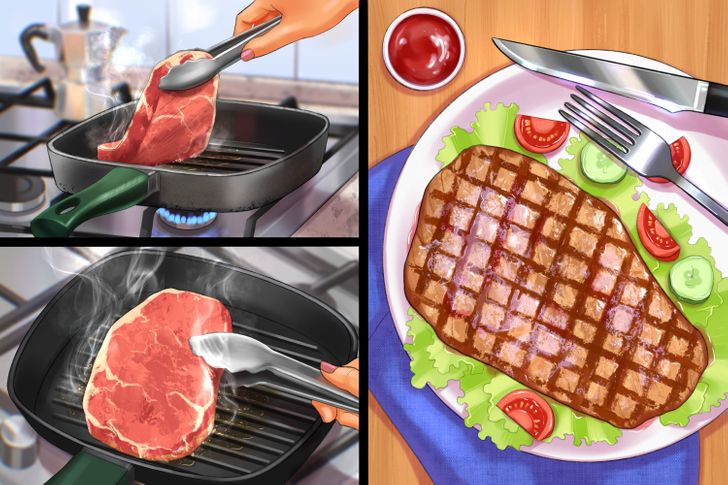
-
This will prevent the meat from being marked in the shape of the griddle gutters. In addition, the steak will have the typical diamond shape of grilled steak.
Step 3: Turn it over.
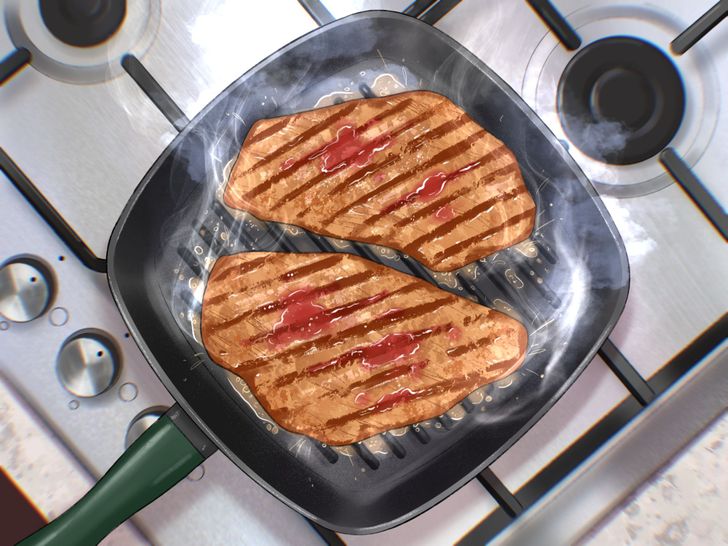
-
Do this when you see small droplets of blood on the surface of the steak.
Step 4: Cook it by “flipping it often.”
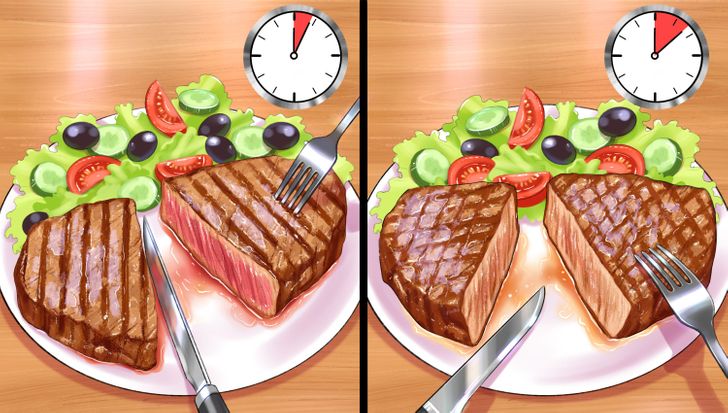
Step 5: Take it to the table right away.

-
Wait a couple of minutes and serve the meat. If you cut it before, it may lose its juices, but if you wait too long, it will be tough and dry.
Key points for perfect cooking
Trick 1: When grilling, the meat should be at room temperature.
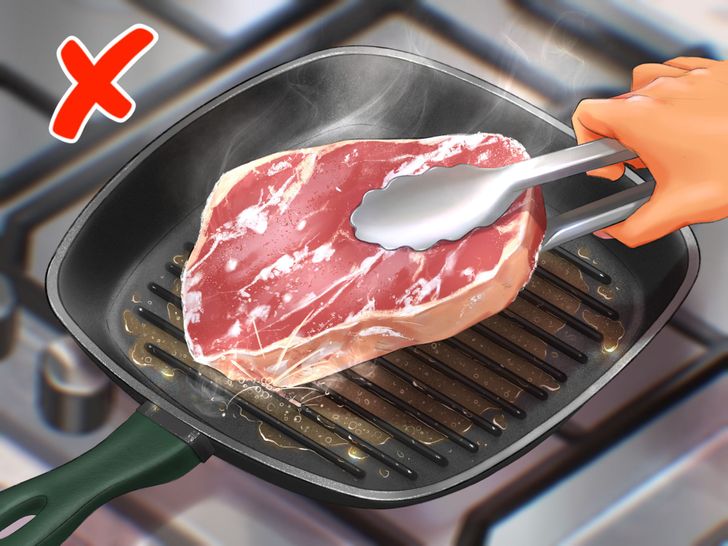
To make it tender, it’s best to leave it for a while outside the refrigerator at room temperature. Never cook it frozen or half-thawed; this will make it tough (this advice is valid for all cuts of meat and all cooking methods).
Trick 2: Preheat the griddle well.
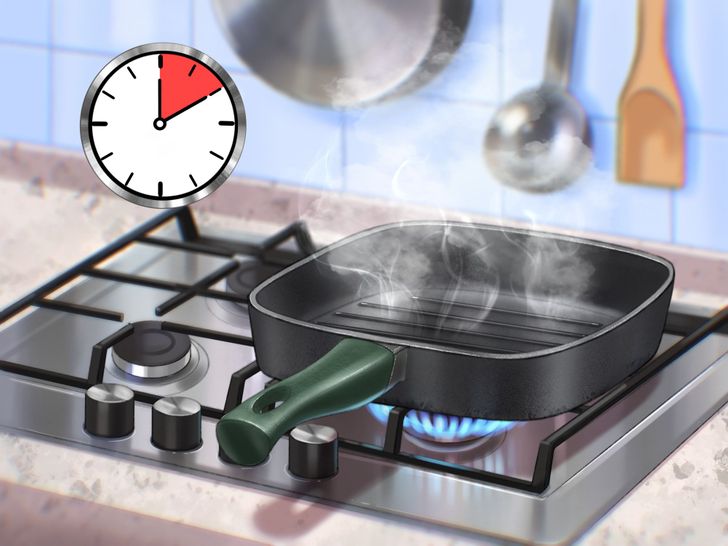
Do this for at least 10 minutes at maximum heat; otherwise, the meat will lose its juices and end up drying out.
Trick 3: Grease the surface.
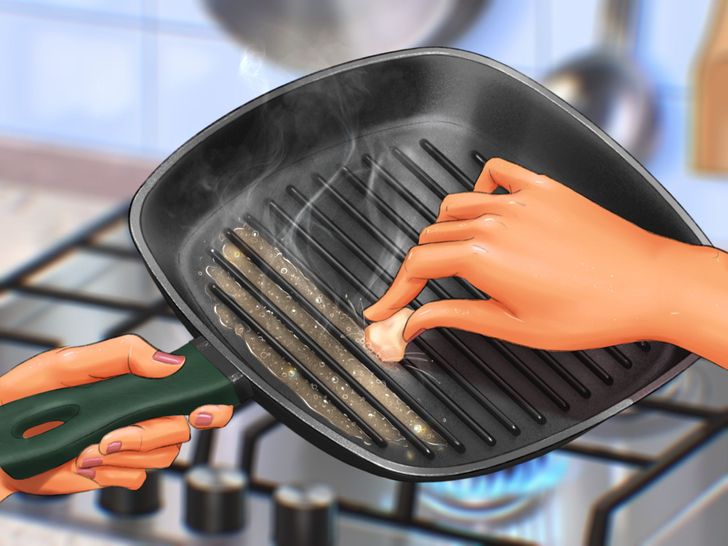
It can be with a piece of fat cut from the same meat or with a drizzle of oil. This will make it crispy and also cook evenly.
Trick 4: Adding salt at the right time.
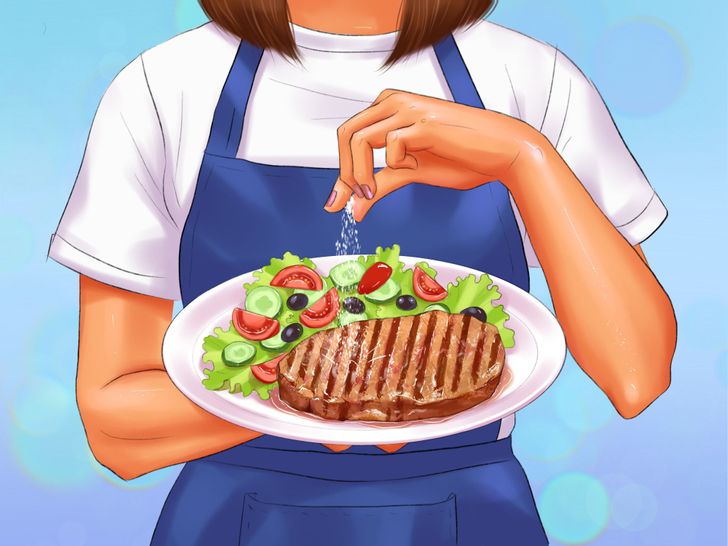
Trick 5: Do not puncture or crush it against the surface of the griddle.

It’s best to handle the meat as little as possible while cooking. Try turning it with tongs or 2 forks, but never prick it — if you do, it may lose all its juices and become dry.
Steak in the oven
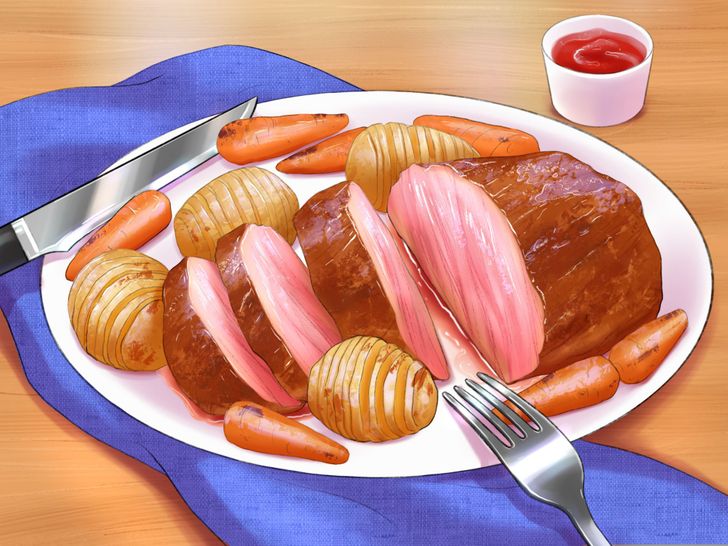
Steak in the oven with potatoes, sweet potatoes, and carrots is a classic dish. And while it takes longer to cook than grilled meat, it’s very simple to prepare if you learn the proper technique.
The most common cuts of meat to take to the oven are:
- Asado (the large section of the rib cage including short ribs and spare ribs)
- Vacío (flank, though it may contain the muscles of other near cuts)
- Rib cap
- Tri-tip, or the tail of the rump roast
Cooking method
Step 1: Sear the meat.
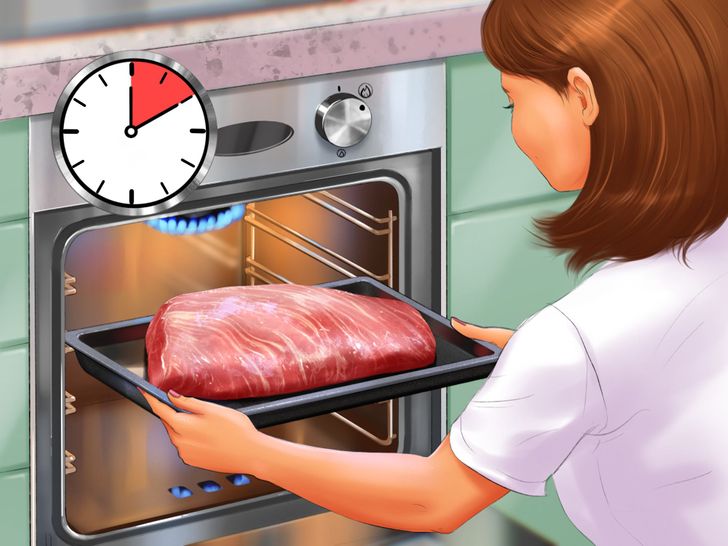
-
Bake it in the oven at a maximum temperature for 5 to 10 minutes. This will “close it” so it doesn’t lose its juices.
Step 2: Lower the oven to 360°F (180°C).
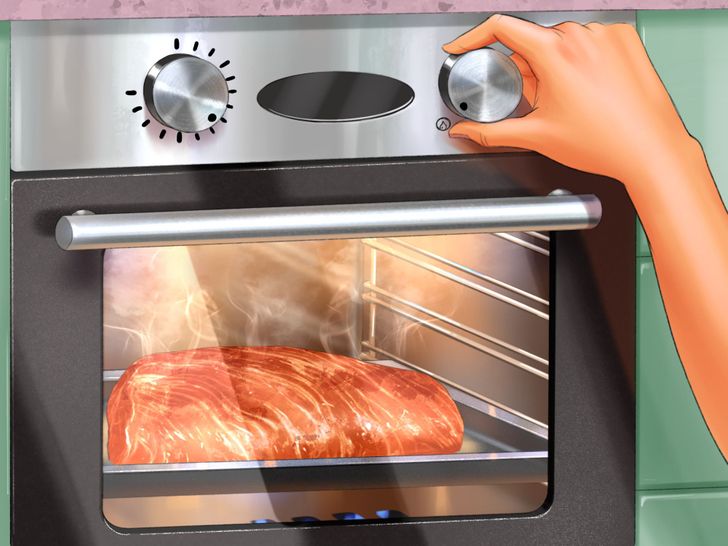
-
After searing, and during the rest of the cooking process, the temperature should be low and constant.
Step 3: While cooking, water it with its own juices.
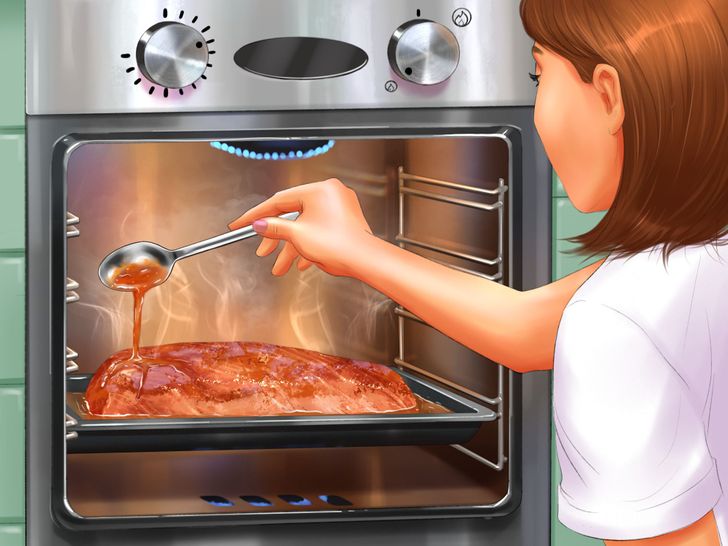
-
This will make it juicier and much tastier — do this at least 2 or 3 times during cooking.
Step 4: Prick it in the center to check for doneness.
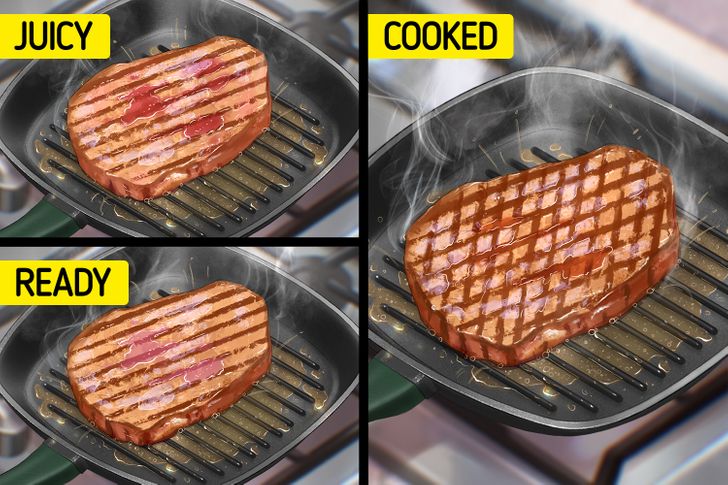
- Do this step when enough time has elapsed. Try to wait for as long as it takes to get the meat to your desired doneness, and check this only once.
- You will decide when it is ready, depending on the doneness you prefer. If you prick the meat and red juice comes out, it means it’s very juicy; if it comes out pink, it’s ready; and if it comes out brown, it’s fully cooked (the liquid can also come out colorless).
Step 5: Let it rest for 10 minutes before cutting.
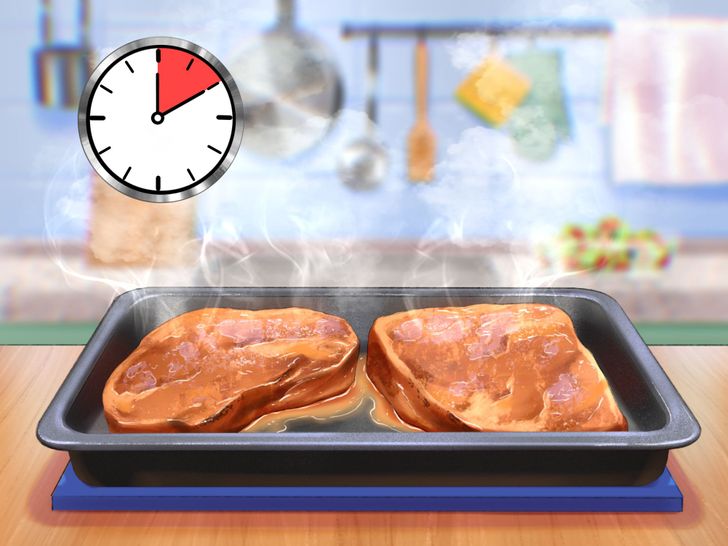
-
This is so the juices that are inside can sit well in the meat and not get lost upon cutting.
Key points for perfect cooking
Trick 1: Choose large cuts of meat.
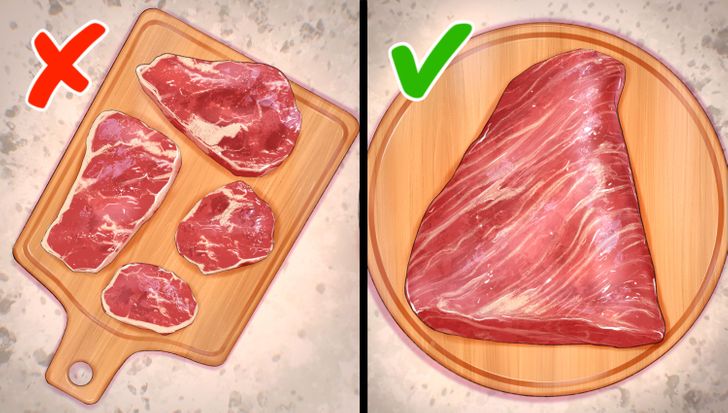
This will make it harder for it to dry out and harden during cooking.
Trick 2: Preheat the oven to maximum.
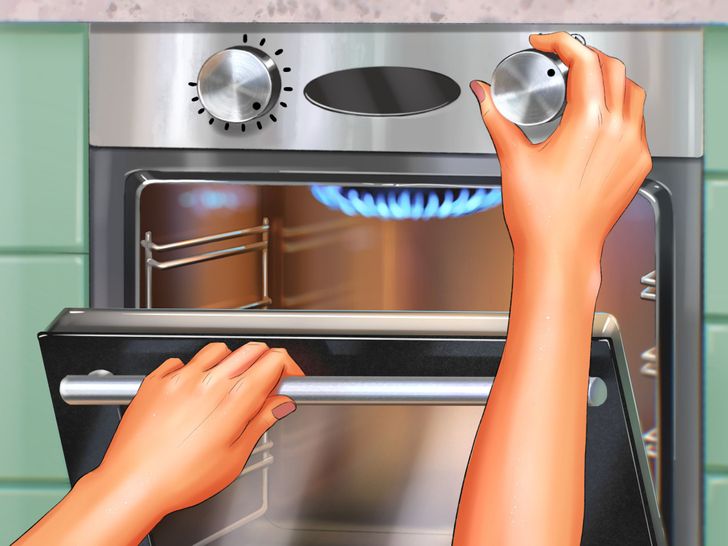
If you put it in the oven as soon as you turn it on, the meat will have a hard time searing and may lose its juices.
Trick 3: Take into account the way in which you place it inside the oven.
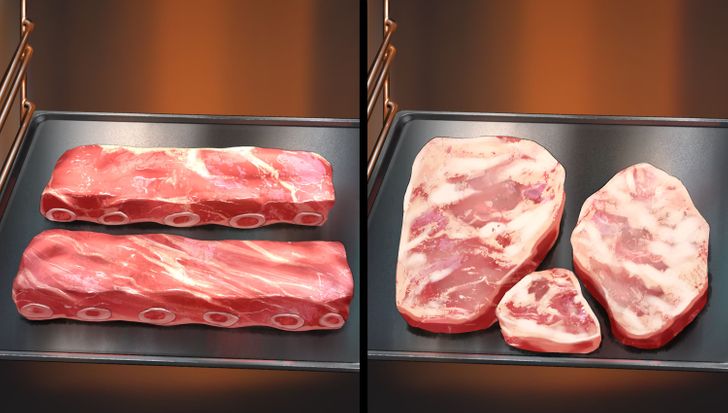
If you’re cooking meat containing bone, it should go downward; and if the cuts you’ve chosen have a layer of fat, they should be placed facing upward.
Trick 4: Think beforehand about the doneness you want to achieve, and cook accordingly.
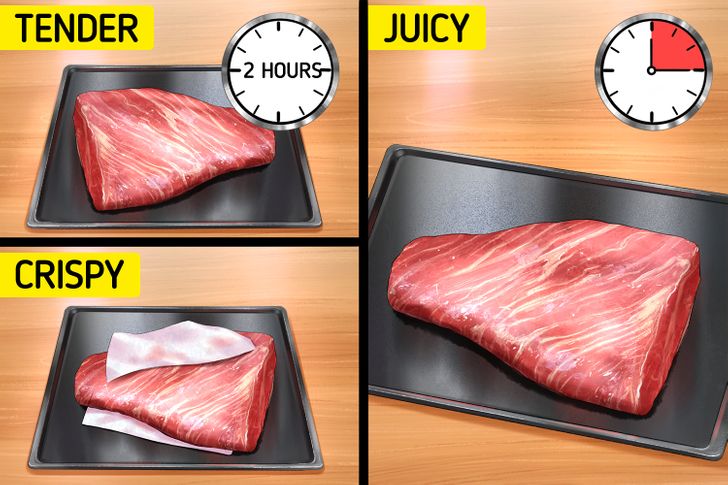
If you want the meat to be tender, keep it at room temperature for 2 hours before putting it on the fire.
If you want it crispy, dry it with absorbent paper before cooking.
If you want it juicy, leave it for 15 minutes at room temperature before putting it in the oven.
Trick 5: Season it with time.
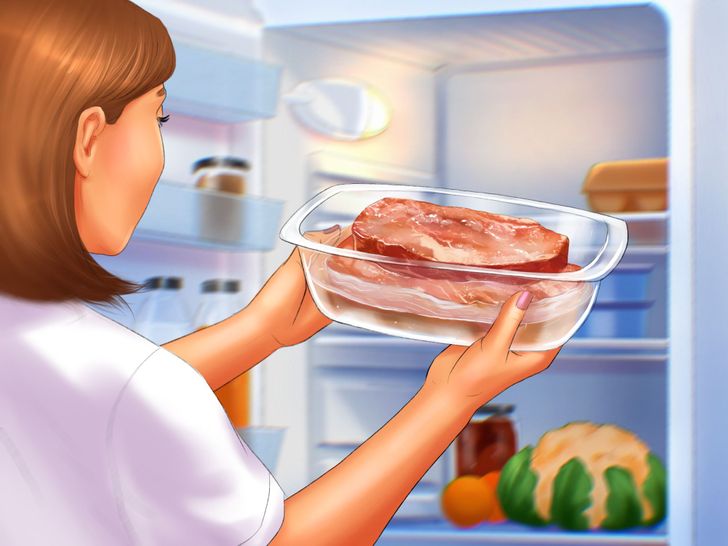
The longer you season the meat before putting it in the oven, the better. You can do it the night before and leave it in the fridge. This way, the seasoning you’ve chosen will reach the center of the meat.
Bonus: choosing between tough or tender cuts
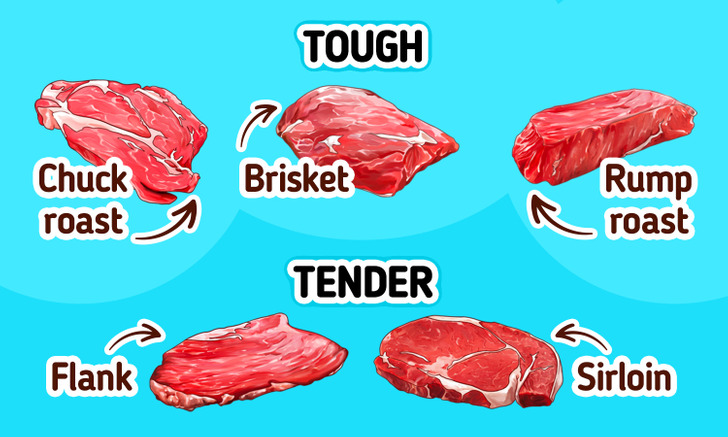
Before choosing the way you want to prepare your meat, pay attention to the cut you’re working with.
- Chuck roast, brisket, and rump roast are tough cuts. You can try slow and low BBQ cooking.
- Flank, sirloin, ribeye, T bone, and filet mignon are tender cuts. You can try high-heat grilling.